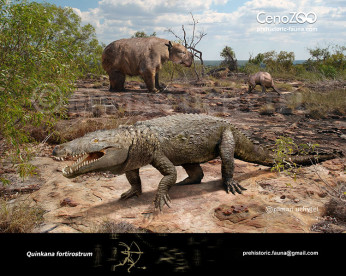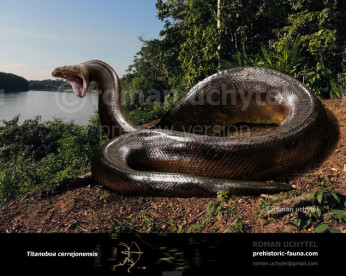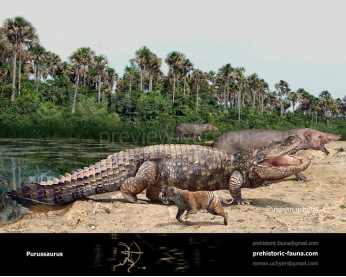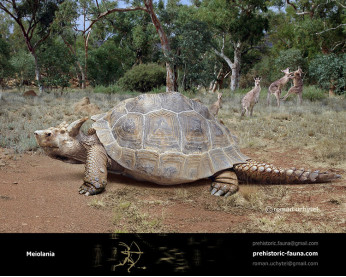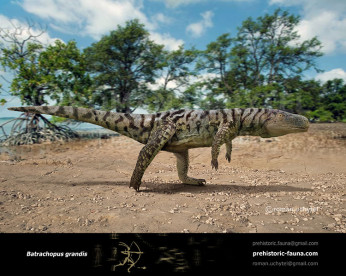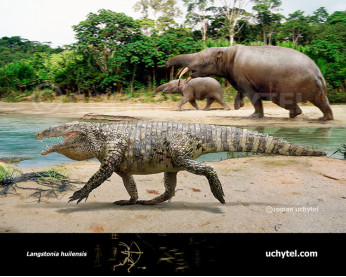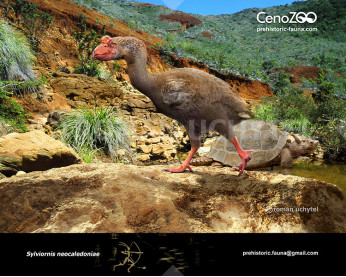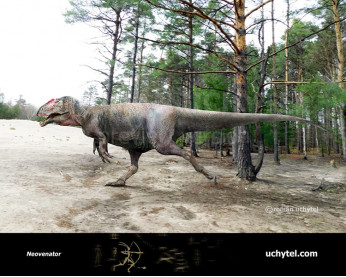Mekosuchus
1000000007310000000073
Mekosuchus (†Mekosuchus (Balouet & Buffetaut, 1987))
Order: Crocodilia
Clade: †Mekosuchinae
Dimensions: length – 2 m, weight ~ 40 kg
Temporal range: lived in New Caledonia from the Oligocene – Holocene, 28.1–0.003 Ma
A typical representative: †Mekosuchus inexpectatus (Balouet & Buffetaut, 1987)
Mekosuchus is a genus of extinct crocodiles within the subfamily Mekosuchinae. There are currently four species of Mekosuchus recognised. The first discovered (and youngest) is the type species M. inexpectatus from the Holocene of New Caledonia which became extinct at some point in the last 4,000 years, most likely with the arrival of humans in the archipelago. Mekosuchus had specialized back teeth for cracking mollusk shells and arthropod carapaces, an adaptation in response to the lack of large ground-dwelling prey in New Caledonia; although it was likely also an opportunistic hunter that went after lizards and various-sized birds when possible. They are believed to have been made extinct by the arrival of humans on the South Pacific islands where they lived. The species of this genus were small in size, 2 m in maximum length, and terrestrial, making them the last surviving group of fully terrestrial crocodilians, leaving only semi-terrestrial species such as the Cuban crocodile and the dwarves Osteolaemus and Paleosuchus.
Another Holocene species is known, M. kalpokasi which lived on the island of Éfaté of Vanuatu approximately 3,000 years ago and likewise disappeared with the arrival of humans.
M. whitehunterensis, the oldest known species, lived during the late Oligocene in Queensland, Australia. M. sanderi also lived in Queensland but later, during the Miocene.
Оплата
У Вас є кілька зручних способів купівлі зображення: кредитна чи дебетова картка Visa, Mastercard, Maestro; PayPal або банківський переказ
Mekosuchus (†Mekosuchus (Balouet & Buffetaut, 1987))
Order: Crocodilia
Clade: †Mekosuchinae
Dimensions: length – 2 m, weight ~ 40 kg
Temporal range: lived in New Caledonia from the Oligocene – Holocene, 28.1–0.003 Ma
A typical representative: †Mekosuchus inexpectatus (Balouet & Buffetaut, 1987)
Mekosuchus is a genus of extinct crocodiles within the subfamily Mekosuchinae. There are currently four species of Mekosuchus recognised. The first discovered (and youngest) is the type species M. inexpectatus from the Holocene of New Caledonia which became extinct at some point in the last 4,000 years, most likely with the arrival of humans in the archipelago. Mekosuchus had specialized back teeth for cracking mollusk shells and arthropod carapaces, an adaptation in response to the lack of large ground-dwelling prey in New Caledonia; although it was likely also an opportunistic hunter that went after lizards and various-sized birds when possible. They are believed to have been made extinct by the arrival of humans on the South Pacific islands where they lived. The species of this genus were small in size, 2 m in maximum length, and terrestrial, making them the last surviving group of fully terrestrial crocodilians, leaving only semi-terrestrial species such as the Cuban crocodile and the dwarves Osteolaemus and Paleosuchus.
Another Holocene species is known, M. kalpokasi which lived on the island of Éfaté of Vanuatu approximately 3,000 years ago and likewise disappeared with the arrival of humans.
M. whitehunterensis, the oldest known species, lived during the late Oligocene in Queensland, Australia. M. sanderi also lived in Queensland but later, during the Miocene.

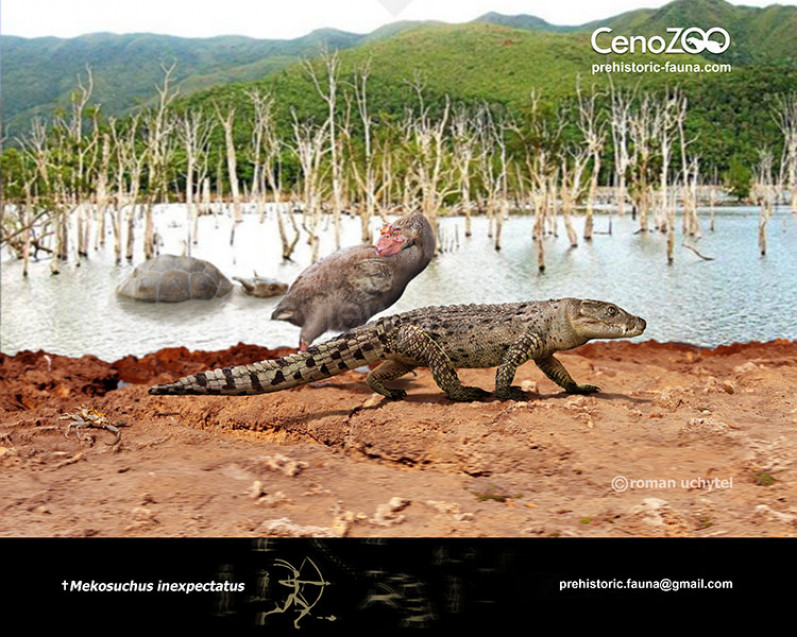
-797x638.jpg)
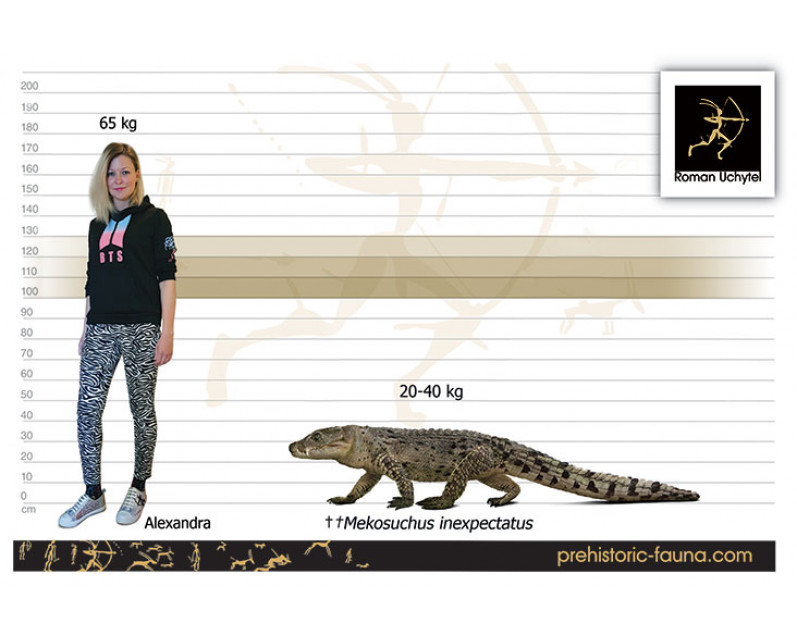

-70x56.jpg)

